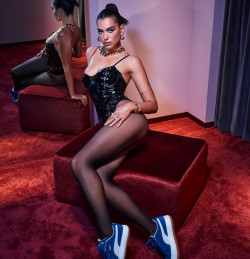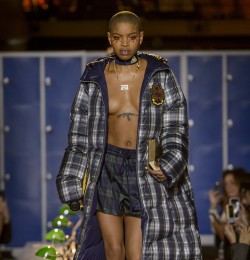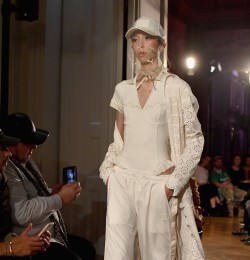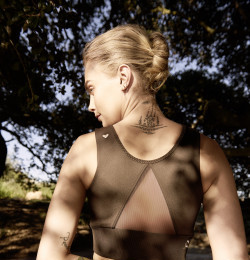

PUMA
Herzogenaurach, 91074
Germany
About
founded by
Rudolf Dassler
about
PUMA starts in Sport and goes throughout Lifestyle and Fashion. As one of the world's leading SportLifestyle brands, PUMA designs and develops Footwear, Apparel and Accessories.
Founded in Herzogenaruach in 1948 by Rudolf Dassler as part of a family business which had been going since 1924. Today it is an international company with more than 70 factories, distributes its products in more than120 countries, employs more than 9,000 people worldwide and has headquarters in Herzogenaurach/Germany, Boston, London and Hong Kong.
history
In the small town of Herzogenaurach, not far from the German city of Nuremberg, two brothers laid the foundation for what would become the European capital of sportswear. Adolf and Rudolf Dassler were born into a poor family at the turn of the 19th century. Their father, Christoph Dassler, was a worker at a shoe factory, while their mother, Pauline Dassler, ran a small laundry business. At age 15 Rudolf Dassler started working at the same shoe factory as his father and soon showed the qualities of an entrepreneur. He was energetic, persistent, and ambitious, and he saved his hard-earned money instead of spending it right away. However, it was not until after World War I that he had a opportunity to prove himself in business. After the war, Rudolf Dassler took his first positions in business management, first at a porcelain factory and later in a leather wholesale business in Nuremberg.
In the early 1920s Rudolf Dassler decided to go back to Herzogenaurach and team up with his brother Adolf in a business partnership. Their company, which was incorporated as the Gebr�der Dassler Schuhfabrik in 1924, produced slippers and outdoor shoes. Rudolf Dassler ran the business, while Adolf took care of the technical operations and production.
In 1936, African-American track star Jesse Owens brought the company into the public eye when he won four gold medals at the Olympic Games in Berlin wearing Dassler shoes.
Letters from around the world landed on the brothers' desks, and the trainers of other national teams were all interested in their shoes. Business boomed and the Dasslers were selling 200,000 pairs of shoes each year before World War II.
Three years later World War II broke out. Although the brothers could have given up for a number of reasons during the war, it was not this world-shattering event that led to the Dassler company's sudden end, but a homemade war of a different kind. In 1948, the two brothers had a serious falling-out, and they stopped talking to each other. Their company was split into two new companies: Adolf Dassler formed his own business named adidas, combining his nickname Adi with the first three letters of his last name; Rudolf Dassler set up his own shop called Ruda � from �Ru� in Rudolf and �Da� in Dassler. The two brothers had become competitors.
A number of world-class athletes, especially runners and soccer players, helped the young Puma brand gain acceptance. In 1950, at the first international soccer match after World War II, several German players wore the Puma "Atom" shoe. The Olympic Games in 1952 in Helsinki were a spectacular success for Puma and opened the British market to the young company. The American Olympic Committee made Puma its official shoe supplier in 1952 and again 1956. In 1952 the American women's 400-meter relay team won the Olympic gold medal in Puma running shoes. Puma's image was also carried around the world by the rising soccer star Pel�, the Brazilian "king of the stadium" who favored Puma's "King" shoes. After some early difficulty, the company's export business began to thrive. Puma shoes were shipped to 55 countries on five continents. The first licensed production line was opened in Austria. In 1959 Rudolf Dassler's firm was transformed into Puma Sportschuhfabriken Rudolf Dassler Kommanditgesellschaft, as Dassler's wife and his two sons, Armin and Gerd, became part owners of the firm. By 1962 Puma shoes were exported to almost 100 countries around the world.
Another Puma hallmark was product innovation. In 1960 Puma introduced a new technology for soccer shoes, using a vulcanization process to join the soles to the uppers. Soon 80 percent of all soccer shoes were manufactured with this technology. In the early 1960s Puma also developed running shoes with a uniquely shaped sole that supported the natural movement of the foot, based on the latest medical research of the time. In the late 1960s Puma was the first company to offer athletic shoes with a Velcro strap.
Rudolf Dassler died in 1974, and his son Armin A. Dassler, who since the early 1960s had been managing Puma's first foreign subsidiary in Salzburg, Austria, took his place. Twelve years later Puma went public and was renamed Puma AG Rudolf Dassler Sport.
During the 1970s and 1980s, world famous athletes wore Puma products on their feet and bodies. High-jumper Dwight Stones broke the world record in Puma shoes three times in the years 1973 through 1976.
In 1991 the Swedish conglomerate Proventus AB bought all Puma common stock traded publicly in Frankfurt and Munich. That same year saw the founding of Puma International, a holding company for Puma's divisions in the Far East, Australia, Spain, France, Austria, and Germany, which were organized as independent profit centers. Despite the company's high profile and success, its profits had steadily declined until, in the early 1990s, they were nonexistent. It was not until 1994 that Puma again turned a profit, and Puma shareholders received a dividend for the first time in 1996.
In 1993 Puma's prospects looked anything but bright. The company had been in the red for almost a decade. In December 1992 parent company Proventus gave Puma a badly needed capital boost of DM 50 million. However, the company was competing in a stagnating market driven increasingly rapid product cycles that resulted in rising research and development and marketing costs, as well as losses through more frequent markdowns of older models. Although Puma scored high in brand name recognition, the company that in the 1980s had generated half of all sales with shoes in the lower price ranges was now struggling with its cheap image. Much like its competitor adidas, Puma tried to succeed by leaving low price markets that allowed only low profit margins; breaking into premium price markets--the traditional territory of American giants Nike and Reebok--became their new goal. It was perhaps too little, too late. This strategy at first resulted in significant losses in sales and market share. Adding to the company's problems was the fact that the successful introduction of the innovative Puma Disc System shoes in 1992 had been an expensive undertaking. By February 1993 it was clear that Puma needed new leadership.
The arrival of 30-year old Jochen Zeitz hailed better times for Puma. His contract has been extended ahead of schedule for four more years until 2012 in October 2007.
On year after Zeitz became CEO, Puma reported its first profit--DM 25 million--since its initial public offering in 1986. Under Zeitz's leadership the company initiated a fundamental, market-oriented "fitness program" that included rigorous cost cutting and reorganization measures.
The year 1996 marked the end of the restructuring period Puma had been undergoing since 1993. This was followed by a period of new alliances and higher investment in international marketing and new product development. For the first time since the company went public, Puma shareholders saw a dividend in 1996 after the company achieved a three-year sales record in comparison to previous years.
In the second half of the 1990s Puma intensified its international activities. A new subsidiary--Puma Italia S.r.l.--began operations in 1997. Two years later Puma opened its new subsidiary Puma UK. However, the most important strategic market for Puma was the United States. In 1997 Puma generated about 80 percent of its sales outside Germany, and this figure shrunk to ten percent if license income was included. Puma's position was especially strong in Japan where ten percent of all license fees were collected. After several contracts with American athletics the strategy certainly seemed to be paying off in 1999 when Puma's U.S. sales increased by 60 percent, and, moreover, the company seemed well-positioned for the future.
They had successfully won the rights of sponsoring the 2006 FIFA World Cup champions, the Italian national football team, with them making and sponsoring the clothing worn by the team. Their partnership with Ferrari and BMW to make Puma-Ferrari and Puma-BMW shoes has also contributed to this success. On 15 March 2007, Puma launched its first new 2007/2008 line of uniforms for a club, and Brazilian football club Gr�mio will be the first to use the laser sewn technology, similar to the one worn by Italy at the 2006 World Cup. Gr�mio and other Brazilian clubs will be the first to use the technology because their season starts six months earlier than European clubs. Puma also makes baseball cleats, and Johnny Damon, the outfielder for the Detroit Tigers, is their spokesperson. He has his own cleat called the "DFR Metals".
In February 2007, Puma reported that its profits had fallen by 26% to �32.8 million ($43 million; �22 million) during the final three months of 2006. Most of the profit decline was due to higher costs linked to its expansion, and sales actually rose by more than a third to �480.6 million.
In early April 2007, Puma's shares rose �29.25 per share, or 10.2% higher, at �315.24 per share. On 10 April 2007, French retailer and owner of Gucci brand Pinault-Printemps-Redoute (PPR) announced that it had bought a 27% stake in Puma, clearing the way for a full takeover. The deal values Puma at �5.3 billion. PPR said that it would launch a "friendly" takeover for Puma, worth �330 a share, once the acquisition of the smaller stake was completed. The board of Puma welcomed the move, saying it was fair and in the firm's best interests. On 17 July 2007 PPR have 62.1 % of Puma stocks.
While PPR owns the majority of Puma's stock, Puma remains an independent company.
Perfumes
Official Social Media
Latest PUMA Advertisements
Look Books from PUMA
PUMA Fashion Shows





